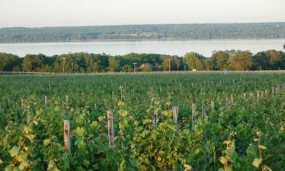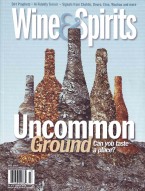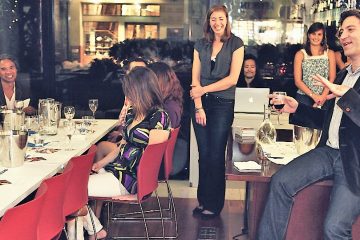Single Lake – Single Vineyard
Rieslings from Seneca by Jamal Rayyis
Appearing in Wine & Spirits Magazine, September 2012
Perhaps it was Providence.
After graduating from the Viticultural Research Institute at Neustadt in Germany, Hermann J. Wiemerís first job was to make sacramental wines in upstate New York, from the most ignoble of grapes, vitis labrusca. The year was 1965. The native of Bernkastel in the Mosel had no intention of remaining longer than two years. And, he indeed left, only to be lured back in 1968 by the entreaties of Walter Taylor, who was starting Bully Hill Winery in sight of Seneca Lake, the largest of the seven Finger Lakes. Ironically, Wiemer’s job at Bully Hill required him to make wines from vitis labrusca as well as French-American hybrids such as vidal blanc and baco noir. But he had other plans. Now, nearly 45 years later, Wiemer is largely credited with pioneering the move to single-vineyard wines, an effort that has confirmed the Finger Lakes as a prime growing region for riesling.
Those looking for a story that he possessed a divining rod for riesling will be disappointed. ìI just got really lucky,î he says.
Wiemer noticed the peach and cherry trees growing in the area ñ signs, according to German folk wisdom, that (vinifera) grapes could thrive. He’d also learned from his father, a master vine-grafter, the possibilities afforded by the right rootstock. And, just west on the shores of Keuka Lake, Dr. Konstantin Frank had been producing riesling since 1962, off vines heíd planted in 1958. While Wiemer and Frank hadn’t much contact, Frankís work confirmed riesling could succeed.
He decided to plant his first vineyard in an abandoned soybean farm in Dundee, about one mile from the shores of Seneca Lake. “We had no concern about terroir back then. I just didn’t want my grapes to die. I took that land because the terms were what I could afford, a contract sale at $359.99 per month, like buying a car”.That was in 1973. There were no viticultural studies he could consult; people at Geneva [New York State Agricultural Experiment Station] only thought about yields, hybrids, and native grapes. “They didn’t even think about vinifera,” he recalls.
An autumn grape cluster. (Photo is property of Hermann J Wiemer Vineyards)
Wiemer started slowly, planting seven acres of riesling and chardonnay in 1974. “At the beginning, we didn’t know what the soil would do. We did crude tests for limestone – which wasn’t present – but that was about it. One thing we knew we needed was drainage, so we installed drainage tiles three feet below the surface. Otherwise, the ground could turn hard as cement after it rained.” That vineyard, now called HJW, is planted on aurora silt loam, a soil that’s poor in organic material; it’s a mix of sandy gravel with shallow topsoil, heavy clay at the base and solid shale underneath.
Cold winter temperatures also offered a challenge. The Mosel river valley gets cold in the winter, but not quite as cold as central New York State can. And while Seneca Lake doesn’t freeze in winter, radiating warm air along its shores, Wiemer took the precaution of burying the base of his vines with soil before the winter to protect from hard freezes. A freeze in late 1980 referred to as the “Christmas Massacre” dropped temperatures to -15∞ F, seriously damaging vines throughout the region. Ten miles up the road, however, a riesling vineyard the Taylor family planted five years earlier showed no damage at all. Wiemer kept an eye on the property, and in 1989 purchased 56 acres of it. Later studies from Cornell have shown that this property is in the warmest zone of the Finger Lakes, due west of the deepest part of the lake.
Wiemer realized fairly quickly that the site encompassed two distinct terroirs: while it was all Honeoye silt loam, a sand-like rich, humus-based soil with good drainage and little clay content, one side of the road was flat, while the other tilts slightly south. On that slope, the soil is poorer, more eroded and sand-like with streaks of shale in parts; the vines grow less vigorously there.
Wiemer vinified them separately, but it wasn’t until 2007 that the winery began bottling them separately, when Wiemer retired and his assistant, Fred Merwath, took over. “While we thought it would be great to showcase them,” Merwath recalls, “Hermann was reluctant to add more wines to the production. [Also, Hermann had a hard time coming up with names for the vineyards ñ n.b. a detail not in original W/S article]” They named the sloped parcel Magdalena, after Wiemer’s mother, and the flatter one after his father Josef.

Tasting the three single-vineyard wines together, the differences are easy to perceive. The HJW stands out for its leanness and its fine, mineral structure; in comparison, Josef and Magdalena are rounder and more tropical in flavor, with the Magdalena markedly brawnier in stature.
Today, a handful of other wineries are also producing single-vineyard rieslings in the Finger Lakes, including Ravine’s Argetsinger Vineyard and Bloomer Creek’s Tanzen Dame Morehouse Road Vineyard – some of the region’s most touted wines. As Finger Lakes winemakers gain more experience and confidence, there will surely be more. As Wiemer, who cites the centuries-old recognition of single vineyards in Europe, puts it, “Single vineyards, understanding terroir, just take time and a lot of work to know what you have. We’ve only started understanding that in the last ten years. The Finger Lakes is a place you can make great, distinctive wines. That is, if you really want to.”


